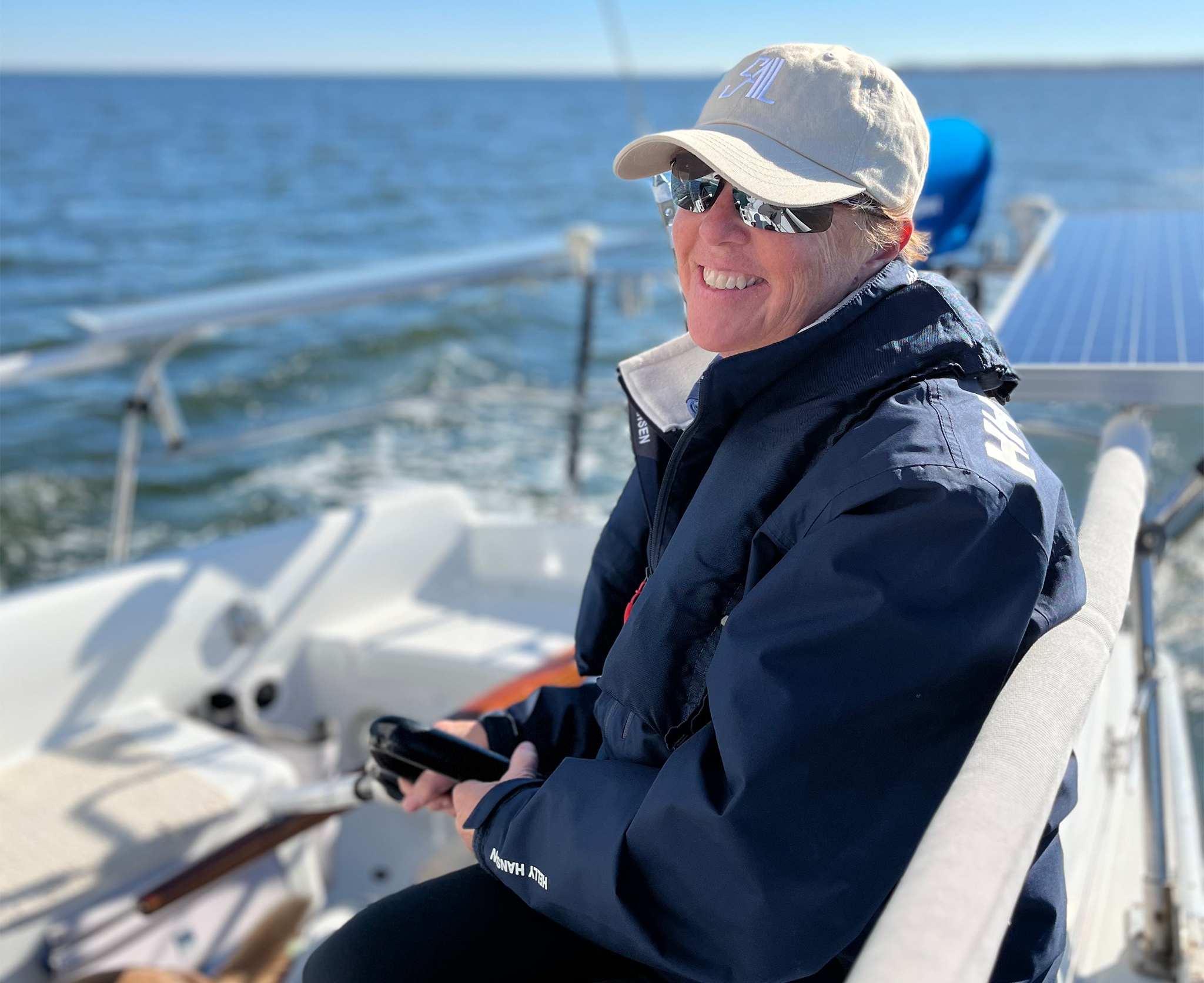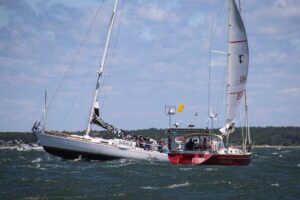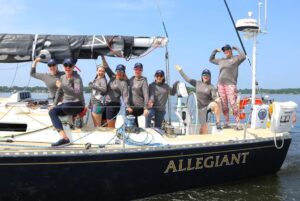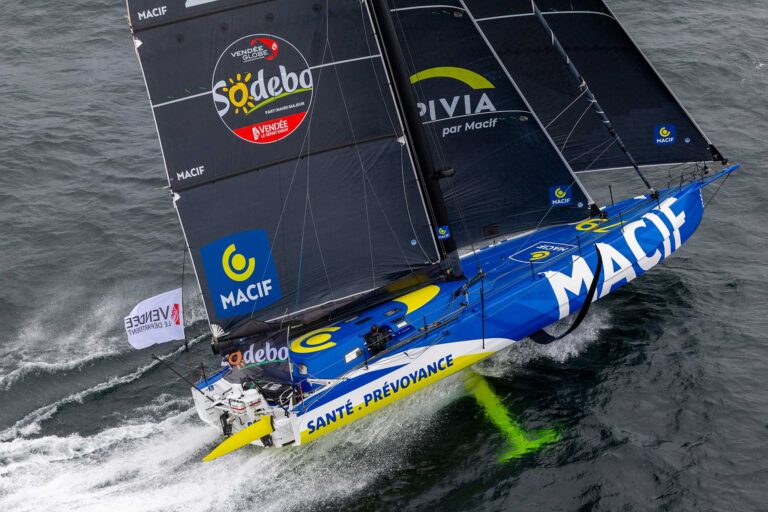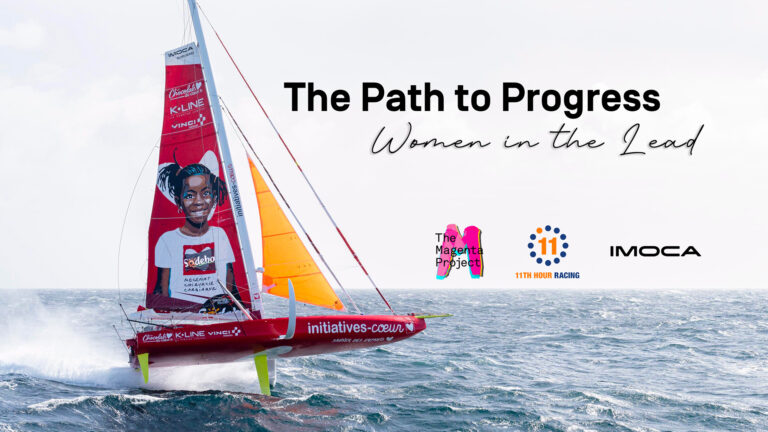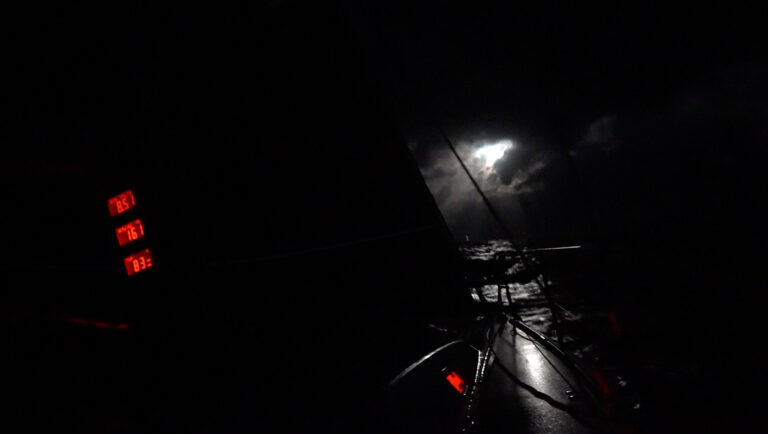The 645-nautical-mile offshore Marion-Bermuda Race provides plenty of time for a skipper and navigator to second-guess their strategy. But for Nancy Rhodes, the midshipman skipper of the Navy 44 Integrity, those inevitable doubts were tempered by the lesson she learned in the difficult Annapolis-Newport Race that had happened just 10 days earlier.
“Annapolis to Newport this year we had an idea of what we wanted to do, and as soon as we left the Chesapeake Bay, we did the opposite, and we did not follow our plan. And we regretted it because all the boats that followed what we had planned to do made out,” she says. “So it was, ‘All right guys, we might be the westernmost most boat right now, but you know what? We’re going to stick to it, and if it doesn’t work that was the way the cards would play out.’ But the big idea was just sticking to the plan.”
That commitment to a west-of-the-rhumb-line strategy, which only a handful of boats adopted from the start, landed Integrity second place in line honors (beating the other two 44s racing, Gallant and Defiance, by about an hour and two hours, respectively), second place in the Founders Division Class C (celestial), the Offshore Challenge Trophy (awarded to the best finish by a youth-crewed boat), and the Bartram Trophy (best performance by a U.S. service academy, maritime college, or ROTC boat).
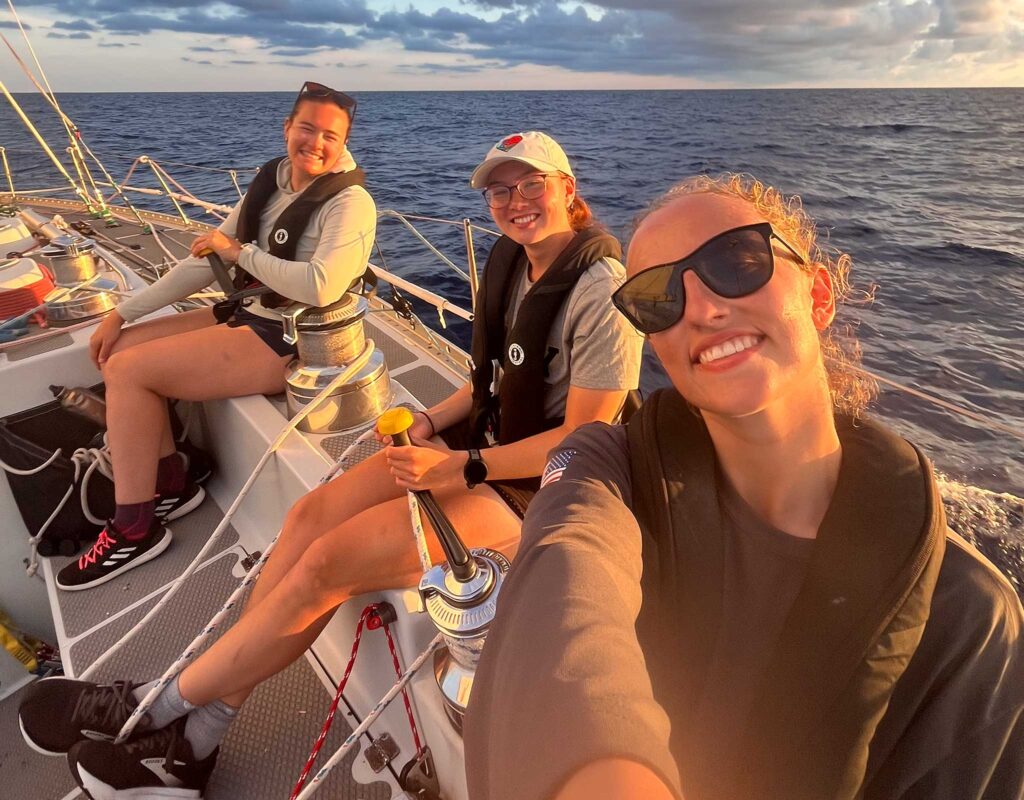
It was a dominant showing in this year’s biennial race, which began on June 20 in Buzzards Bay in a full gale and ended with competitors struggling through dead zones between the Gulf Stream and Bermuda, especially as they were approaching “The Rock” and winds went diabolically light. From the start, most boats chose the rhumb line at least through the Gulf Stream, when some diverged and largely pushed east. Integrity planned to stick to the west from the start—a serious test of faith when it looked for the first half of the race as though boats on the rhumb line or farther east would win easily.
But when the wind went light in the middle and east side of the course, those ahead ground to an agonizing crawl, while the west side always had a little something and the boats there slowly made up ground. In the end, the southwesterly filled in there first, and Integrity, the westernmost boat in the fleet, swooped in on that long-awaited fresh breeze.
“I definitely lost faith a couple of times especially doing celestial navigating and struggling to get a star fix that lined up with our dead reckoning,” Rhodes says. “Seeing the other 44s part and go a little farther east than we were, and knowing we were tracking out west was definitely a moment when I was like, I might be rolling the dice here, but…it’s going to pay or it’s not, and I would rather roll the dice and do something different than just follow the other boats.”
This year is the first time Rhodes has skippered a 44 although this wasn’t her first Marion-Bermuda; that happened during her freshman year when she was crew as part of the Navy Offshore team. Growing up sailing on North Carolina’s Lake Norman in Optis, Lasers, and 420s, she thought she wanted to be on the academy’s dinghy team at first. “But I saw the Offshore Program and thought, that’s something I’ve never even thought about doing, so I thought I should go for it. I’ve loved it.”
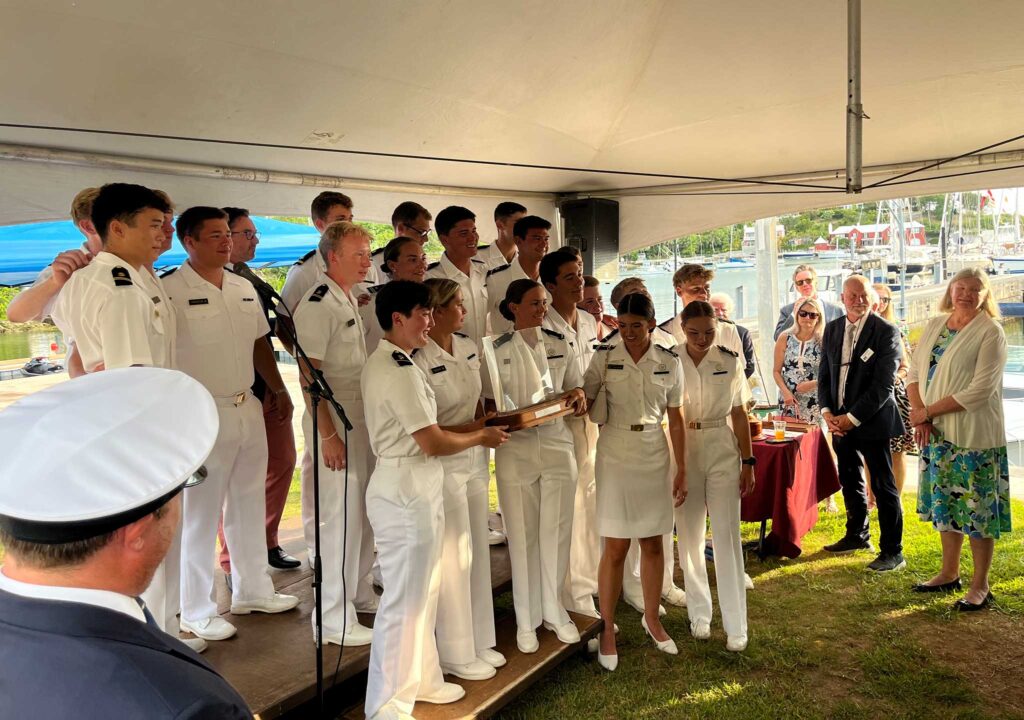
She sailed this race with 10 total on the boat—eight midshipmen and two coaches. Being a skipper presented new challenges she hadn’t quite expected.
“One of the things they tell us a lot at the academy is, your job as an officer is breadth of knowledge, not depth of knowledge. It’s been hard to learn to know maybe it’s not my role to be sitting down there fixing the engine right now. Maybe it’s not my role to be head-down in the nav desk. My role is to be the person orchestrating how we’re going to accomplish each of these tasks to make sure the boat runs properly.”
She says one of her first instincts when something goes wrong, whether mechanical, navigational, or even with sailhandling, is to dive into fixing the problem herself.
“It’s been interesting to see how my role is really just to make sure the people I’m in charge of are doing their job and verifying, double checking, but also trusting them to do it so I can make sure were all working together and accomplishing it.”
All three Navy 44s raced using only celestial navigation—one of the unique options that sets the Marion-Bermuda Race apart from other long-distance races. They tape over their GPS and anything showing their position, using the stars and dead reckoning on paper charts to find their way to Bermuda. Aiden Newman, a midshipman going into his junior year, was the primary navigator on Tenacity.
“As a skill, it’s pretty cool to me that we’re able to still use that to navigate,” Rhodes says. “They teach us at the academy a whole class on it, and it’s just neat to know it’s an option to navigate.” It’s always an exciting moment, she says, when they are able to turn on the electronics when approaching the island and see how accurate their navigation is. “It was cool to see that we were able to do it successfully.”
The rivalry among the 44s, she says, “is the best.”
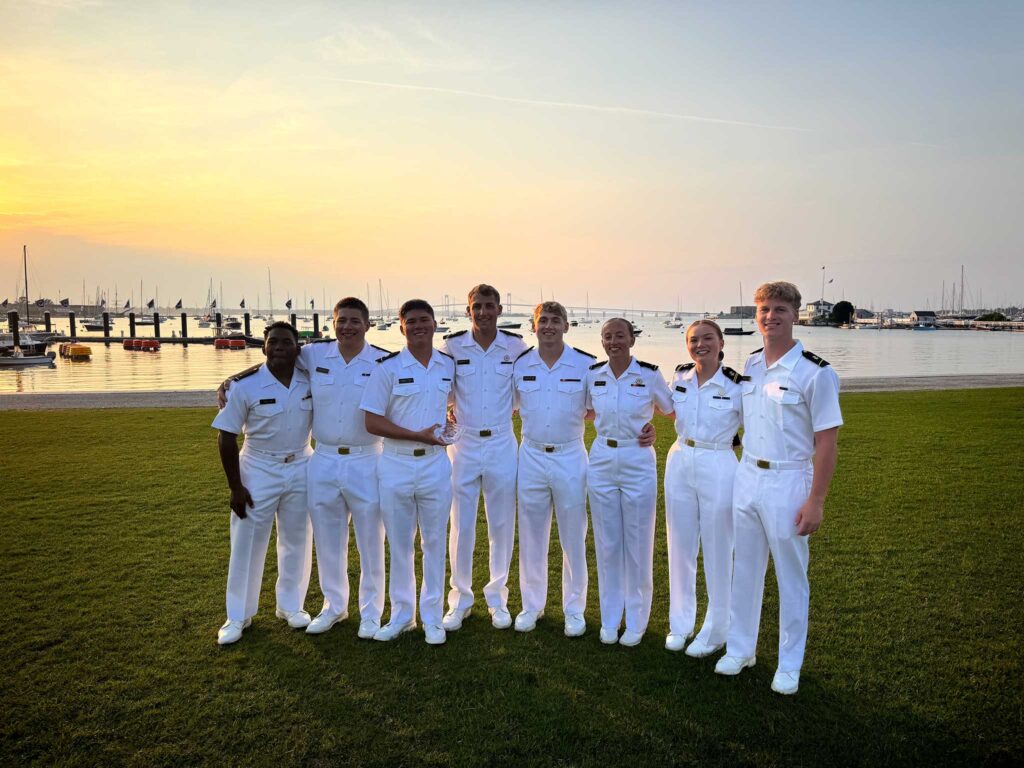
“Sometimes we go out there and the only people we’re looking at are the other 44s. It’s a good source of competition, and a lot of times these other boats that are faster, or with all the ratings, it’s difficult, but with the other 44s you know you’ve got to be faster. We’re evened up. There’s definitely a healthy competition, but at the end of the day we’re all supportive of each other.”
That competitive boost played a big role in Tenacity’s finish this year. At one point, she says, the Tenacity crew heard Gallant and Defiance talking on the VHF and they sounded so cheerful, Rhodes says she thought they were nearing the finish well ahead of them. Then, they heard a cruise ship call one of them warning of a narrow CPA, and they realized that cruise ship was not far behind them—which meant their fellow 44s were too.
“We were like, ‘That must be them! Off our port quarter! We’re still in it!’ ’’ It was about 0200 and she had just come on watch. “I was like, ‘Guys, we are going to sail the hell out of this boat right now!’ I put my best driver on, I was on main trim, the other girl on my boat was on jib trim, and we just active trimmed all four hours and we sailed so fast—for the wind. It was really light, but in that wind, we were doing well.”
July 2025
